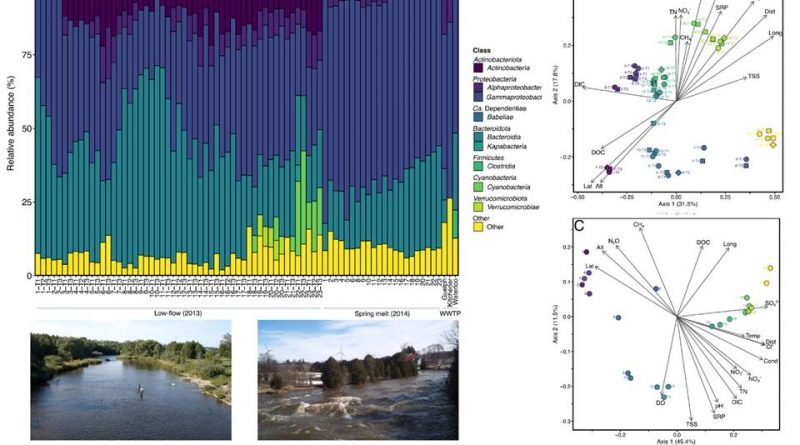Microbial communities change along the 300 km length of the Grand River for extreme high- and low-flow regimes
The Grand River watershed is the largest in southern Ontario. Different parts of the river are affected by agriculture, wastewater, and urban runoff. To study the river’s microbial communities and how they vary with location and environmental conditions, we conducted two sampling events along the entire 300 km river length during different seasons: high flow in the spring and low flow at the end of summer. We used advanced DNA sequencing to analyze the river’s microbes and examined how they related to various factors. We found that flow season had a bigger impact on microbial communities than the location along the river or the time of day. The microbial communities were more diverse and had more species during the high-flow spring season, likely due to increased input from soil and sediment. Key factors influencing microbial communities included suspended solids, dissolved carbon, and distance from the river’s source during the low-flow period. In the spring, conductivity, sulfate, and nitrite levels were significant factors. This study provides a baseline understanding of the Grand River’s microbial communities, which is important for future studies on how human activities impact freshwater ecosystems.
สนับสนุน SDGs เป้าหมายที่ 6 : การจัดการน้ำและสุขาภิบาล ข้อย่อย 6.3 และ 6.6
อ้างอิง
Virgin, T. L., Sonthiphand, P., Coyotzi, S., Hall, M. W., Venkiteswaran, J. J., Elgood, R. J., … & Neufeld, J. D. (2024). Microbial communities change along the 300 km length of the Grand River for extreme high-and low-flow regimes. Canadian Journal of Microbiology. https://doi.org/10.1139/cjm-2023-0092


